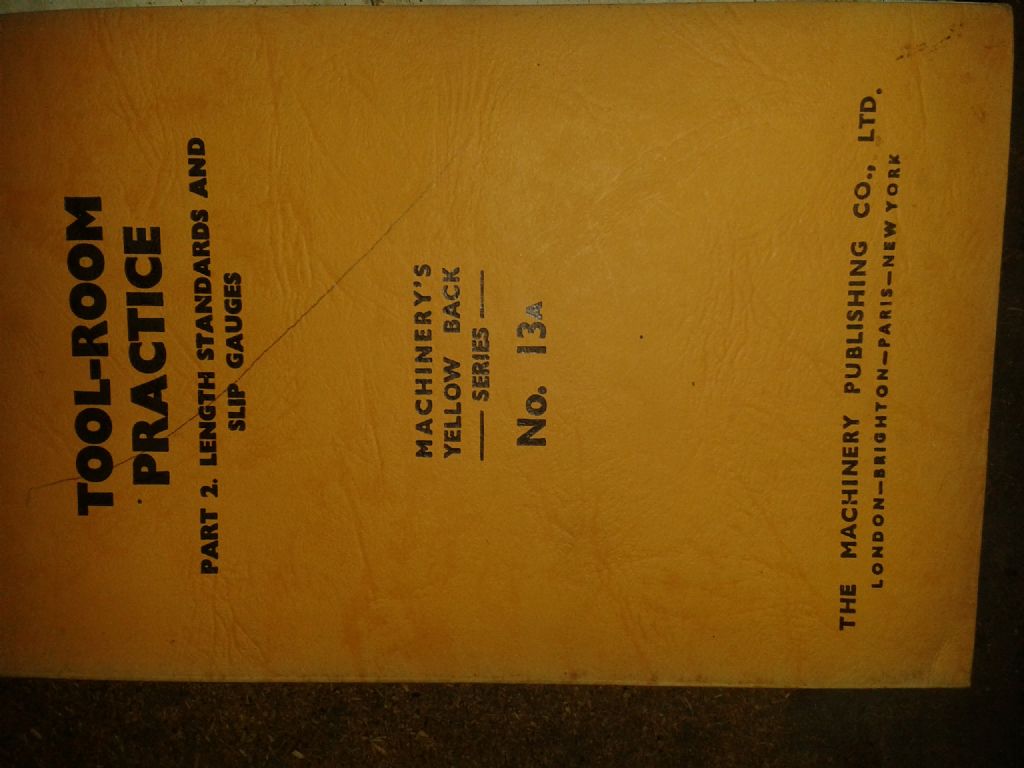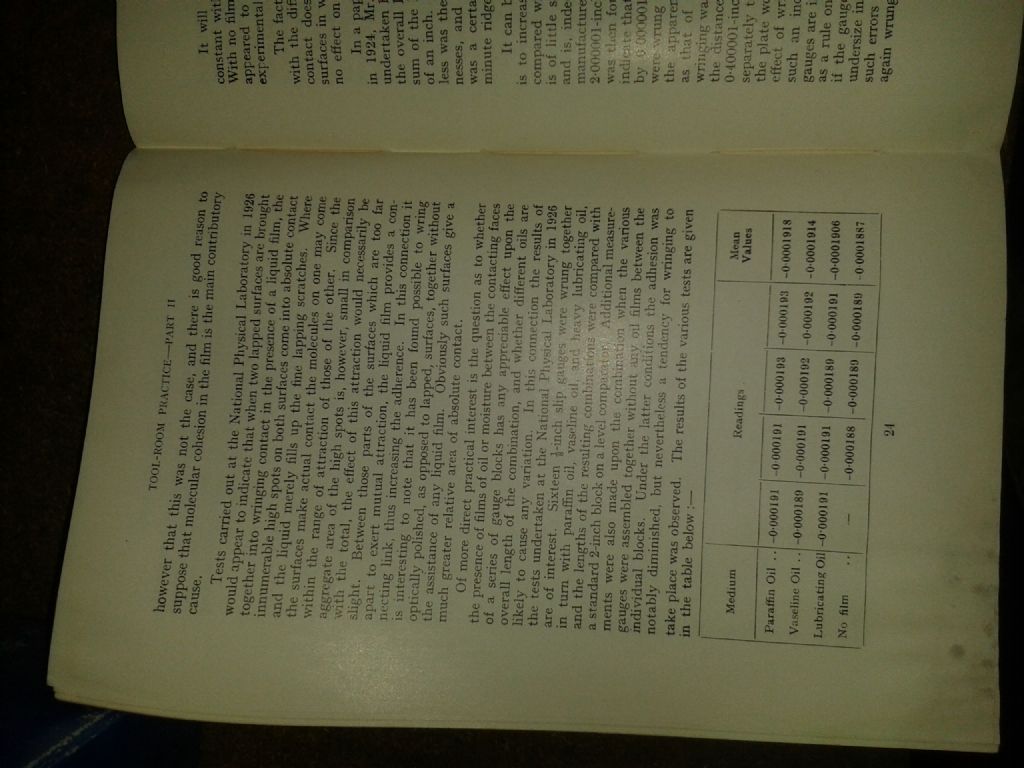All very interesting comments.
When working in the Met lab the slip gauges were used to check and calibrate Go & No go gauges for production purposes. Now what we are talking about here is a temperature controlled room where both the slips and the gauge being checked were placed in a ultrasonic vapor degreaser filled with freon 13 and then wiped clean with a disposable cloth. now if there was any oil left on either component after that it was so insignificant to even guess.
After use they were wiped with an oily rag to remove any human skin acid and placed back in the box for storage.
I agree with Andrew about his thoughts on Nitrogen getting between the blocks without an oil film but wring two of these blocks together and try pulling them apart, With master blocks you will not succeed.
Also optical flats which are used to check the blocks do not have any oil film on them and you have to ware special gloves to handle them. they are made of special optical glass or quarts crystal. place them on the surface being checked and switch on the sodium light and you will see black rings where there is any ware.
But to get to the point the amount of oil on the surface would be so insignificant it is really not worth talking about. Now don't forget temperature plays a big part and I dought if you will ever use or see gauge blocks outside a Met room.
Larry
Edited By Larry Coleman 1 on 09/01/2015 09:54:40
 Michael Gilligan.
Michael Gilligan.







